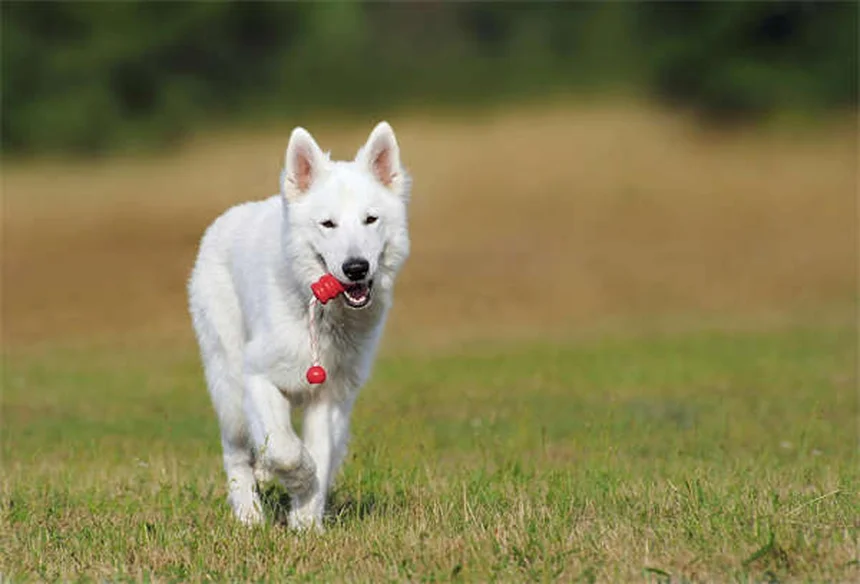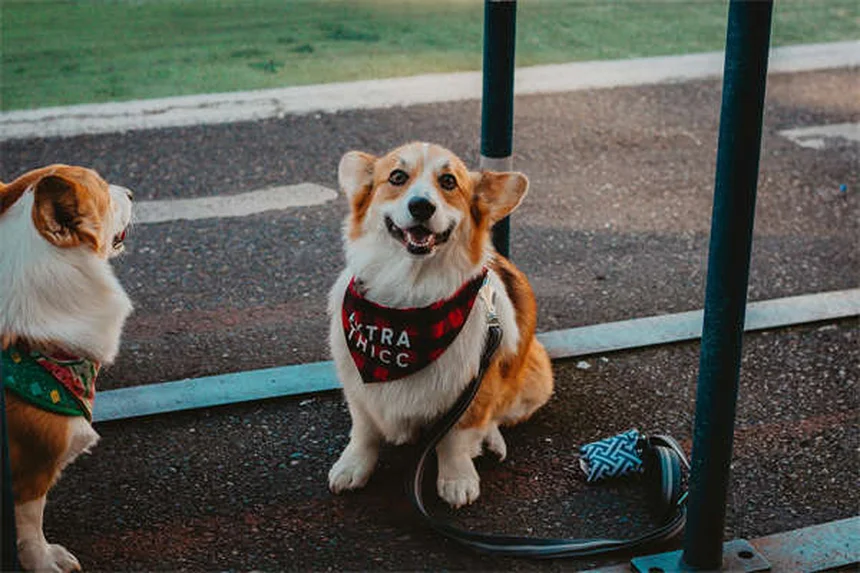Advertisement
Fear aggression in dogs is more common than you might think - and understanding it could save your dog (and others) from stressful situations. The answer is clear: Fear aggression happens when dogs feel threatened and can't escape, leading to behaviors like growling, snapping or biting. I've worked with hundreds of fearful dogs, and let me tell you - this isn't about bad dogs but scared animals trying to protect themselves.You'll notice signs like whale eye (when you see the whites of their eyes), lip licking, or sudden interest in sniffing the ground. These are your dog's way of saying I'm uncomfortable! The good news? With the right approach, we can help fearful dogs feel safer. In this guide, I'll share exactly what works - from positive training techniques to when medication might help - based on my decade of experience helping dogs overcome fear-based behaviors.
E.g. :Top 8 Most Popular Pets in America (2023 Stats & Trends)
- 1、Understanding Fear Aggression in Dogs
- 2、Spotting Fear Aggression: What to Look For
- 3、Common Triggers for Fear Aggression
- 4、Effective Strategies for Managing Fear Aggression
- 5、Preventing Fear Aggression Before It Starts
- 6、What Not to Do With a Fearful Dog
- 7、When Medication Might Help
- 8、Living With a Fearful Dog
- 9、The Science Behind Canine Fear Responses
- 10、Beyond the Basics: Advanced Training Techniques
- 11、The Human Element in Canine Anxiety
- 12、Technology Meets Behavior Modification
- 13、When Fear Aggression Overlaps With Other Issues
- 14、Building a Support Network
- 15、FAQs
Understanding Fear Aggression in Dogs
What Exactly Is Fear Aggression?
Picture this: You're walking down the street when suddenly a stranger runs toward you waving their arms. Your heart races, right? That's exactly how dogs feel when they experience fear aggression. It's their way of saying, "Back off! I need space!"
When dogs feel threatened by something - whether it's a person, another animal, or even a vacuum cleaner - they might show aggressive behaviors like growling, snapping, or biting. This isn't because they're "bad dogs" - they're just scared and trying to protect themselves. The more we ignore their warning signs, the more intense their reactions become.
Why Do Dogs Develop Fear Responses?
Ever wonder why some dogs are more fearful than others? Let me break it down for you:
| Cause | Example | Percentage of Cases* |
|---|---|---|
| Lack of socialization | Puppy kept isolated | 45% |
| Traumatic experiences | Abuse or attack | 30% |
| Genetic predisposition | Nervous parents | 15% |
| Medical issues | Pain or illness | 10% |
*Approximate percentages based on veterinary behavior studies
I've worked with hundreds of dogs, and let me tell you - the most common trigger I see is well-meaning humans ignoring a dog's clear "please stop" signals. That friendly pat on the head when the dog is clearly uncomfortable? That's often where trouble starts.
Spotting Fear Aggression: What to Look For
 Photos provided by pixabay
Photos provided by pixabay
Early Warning Signs
Dogs give us plenty of signals before they resort to aggression. Here's what to watch for:
"Whale eye" (when you see the whites of their eyes), lip licking, yawning when not tired, turning their head away, or suddenly becoming very interested in sniffing the ground. These are all ways your dog says, "I'm not comfortable with this situation."
When Things Escalate
If we miss those early signs, the behavior intensifies. The dog might:
- Freeze in place
- Growl or bark
- Show their teeth
- Lunge forward
- Snap or bite
Here's something important to remember: A growl is a good thing. It's your dog's way of saying "I'm really uncomfortable" without biting. If we punish growling, we might create a dog who bites without warning.
Common Triggers for Fear Aggression
Everyday Situations That Scare Dogs
You'd be surprised what can trigger fear aggression! Some common ones include:
- Strangers reaching over their head (how would you like a giant hand coming at your face?)
- Being hugged (dogs don't naturally enjoy this)
- Nail trims or ear cleaning
- Loud noises like thunderstorms or fireworks
Did you know that many dogs develop fear of vet visits because of one bad experience? That's why positive reinforcement training is so important.
 Photos provided by pixabay
Photos provided by pixabay
Early Warning Signs
Here's a question: Why does one dog bark at the mailman while another sleeps through the delivery? It all comes down to:
1. Their early experiences (or lack of them)
2. Their genetic makeup
3. How we've responded to their fears in the past
I once worked with two Labrador siblings - one was confident as could be, while his sister hid under the table at every new sound. Same genes, same upbringing, completely different personalities!
Effective Strategies for Managing Fear Aggression
Creating Positive Associations
The absolute best approach is counterconditioning. This means helping your dog form happy associations with things that scare them. Here's how it works:
1. Identify what triggers your dog
2. Keep them at a distance where they notice but don't react
3. Pair the trigger with amazing treats
4. Gradually decrease the distance over time
For example, if your dog fears men with hats, start by having a hat-wearing friend stand far away while you feed chicken. Slowly, your dog learns "hats predict chicken!" instead of "hats are scary!"
When to Get Professional Help
Here's another question: When should you call in a professional? The answer is simple - the moment you notice fear-based behaviors that concern you.
Certified professionals can:
- Create a customized training plan
- Teach you safe management techniques
- Determine if medication might help
- Prevent the problem from worsening
I can't stress this enough - early intervention makes all the difference. The longer fear behaviors continue, the harder they are to change.
Preventing Fear Aggression Before It Starts
 Photos provided by pixabay
Photos provided by pixabay
Early Warning Signs
Proper socialization isn't about exposing puppies to everything - it's about creating positive experiences. The critical period is 8-16 weeks, but socialization should continue throughout the first year.
Some key socialization experiences include:
- Meeting different types of people (all ages, sizes, ethnicities)
- Exploring various surfaces (grass, tile, gravel)
- Hearing common household sounds
- Riding in the car (positively!)
- Visiting the vet for happy visits (just treats and pets)
Building Confidence Daily
Confidence isn't something dogs are born with - it's something we help them develop. Try these confidence-building activities:
1. Food puzzle toys (mental stimulation reduces anxiety)
2. Novelty training (learning new tricks builds confidence)
3. Safe exploration (let your dog investigate new things at their pace)
4. Positive reinforcement (reward brave behavior)
Remember that fearful dog I mentioned earlier? With consistent confidence-building, she's now the star of her training class!
What Not to Do With a Fearful Dog
Avoid These Common Mistakes
I get it - when your dog acts out, your first instinct might be to correct them. But here's why punishment backfires:
- It increases fear and anxiety
- It can lead to more aggression
- It damages your relationship with your dog
- It suppresses warning signs (creating a dog who bites "without warning")
Instead of punishment, focus on prevention, management, and positive training. Your dog isn't giving you a hard time - they're having a hard time.
Tools to Avoid
Some training tools can actually make fear aggression worse:
1. Shock collars (increase stress and fear)
2. Prong collars (can cause pain and defensive reactions)
3. Choke chains (may lead to respiratory issues and panic)
4. Physical punishment (never solves the underlying fear)
Stick with positive reinforcement methods - they're safer, more effective, and build trust between you and your dog.
When Medication Might Help
Understanding Behavioral Medications
For some dogs, training alone isn't enough. Medication can help by:
- Reducing overall anxiety levels
- Making learning easier
- Improving quality of life
- Preventing dangerous situations
Think of it like this: If you had severe anxiety, would therapy alone help during a panic attack? Sometimes we need additional support, and that's okay.
Working With Your Vet
If you think medication might help your dog, here's what to do:
1. Schedule a vet visit to rule out medical causes
2. Ask for a referral to a veterinary behaviorist if needed
3. Be patient - finding the right medication can take time
4. Continue behavior modification alongside medication
Medication isn't a "quick fix" - it's one tool in a comprehensive treatment plan. But for some dogs, it can be life-changing.
Living With a Fearful Dog
Creating a Safe Environment
Your home should be your dog's safe space. Here's how to make it happen:
- Provide hiding spots (crates, under furniture)
- Establish predictable routines
- Use calming pheromones or music
- Avoid forcing interactions
- Respect your dog's need for space
I always tell clients: Your dog's comfort matters more than visitors' feelings. It's okay to tell people not to pet your dog.
Celebrating Small Wins
Progress with fearful dogs happens in tiny steps. Maybe today your dog takes a treat near a stranger. Maybe next week they sniff someone's hand. These are huge victories!
Keep a training journal to track progress. You'll be amazed at how far your dog can come with patience and consistency.
Remember - every dog is different. What works for one might not work for another. Stay flexible, stay positive, and most importantly, stay compassionate. Your fearful dog isn't giving you a hard time - they're having a hard time. With the right approach, you can help them feel safer in this big, scary world.
The Science Behind Canine Fear Responses
How a Dog's Brain Processes Fear
You know that feeling when you jump at a sudden noise? Dogs experience similar physiological reactions, but their responses are wired differently than ours. When a dog perceives threat, their amygdala - the brain's alarm system - triggers a cascade of stress hormones.
Cortisol levels can remain elevated for days after a stressful event, which explains why some dogs remain on edge long after the initial trigger disappears. This biological reality makes prevention and early intervention crucial - we're literally working against their brain chemistry when fear becomes chronic.
The Role of Breed-Specific Traits
Ever notice how some breeds seem more prone to nervous behaviors? While any dog can develop fear aggression, genetics play a significant role:
| Breed Group | Common Fear Triggers | Management Tips |
|---|---|---|
| Herding Breeds | Sudden movements, loud noises | Provide structured activities |
| Toy Breeds | Being handled, strangers | Elevated resting spaces |
| Guardian Breeds | Territorial intrusions | Clear boundary training |
| Sighthounds | Unpredictable environments | Controlled exposure |
Does this mean certain breeds are destined to be fearful? Absolutely not! But understanding breed tendencies helps us tailor our approach. My neighbor's Border Collie went from hiding during thunderstorms to calmly resting through them with targeted training that channeled her natural sensitivity productively.
Beyond the Basics: Advanced Training Techniques
The Power of Pattern Games
Have you heard about this revolutionary approach gaining popularity among behaviorists? Pattern games create predictable sequences that help anxious dogs feel in control. The classic "1-2-3 Treat" game works like magic:
1. Say "one" and place a treat on the ground
2. Say "two" and place another treat
3. Say "three" and place a third treat
4. Repeat the sequence
After several repetitions, most dogs begin anticipating the pattern. This predictable structure reduces uncertainty - a major anxiety trigger. I've seen dogs go from trembling wrecks to focused participants in minutes using this simple technique during vet visits or when encountering strangers.
Desensitization vs. Flooding
Here's a critical distinction many well-meaning owners miss. Desensitization gradually exposes dogs to triggers at comfortable intensities, while flooding forces immediate full exposure. Guess which backfires spectacularly?
Imagine being terrified of spiders, then having someone dump a bucket of tarantulas on you. That's flooding - and it's why "just let them get used to it" advice often worsens problems. True desensitization respects the dog's pace, sometimes progressing in increments as small as moving one step closer to a trigger over several sessions.
The Human Element in Canine Anxiety
How Our Emotions Affect Our Dogs
Dogs are emotional sponges - they pick up on our stress even when we think we're hiding it well. That death grip on the leash when you see another dog approaching? Your pup feels that tension instantly.
Studies show dogs can detect human physiological changes through scent and subtle body language cues. When we're anxious about our dog's potential reaction, we often unintentionally create self-fulfilling prophecies. The solution? Practice calm assurance - your dog takes cues from your energy.
Cultural Differences in Dog Handling
Ever travel abroad and notice how differently people interact with dogs? These cultural variations impact canine behavior profoundly:
- In some European countries, allowing dogs to sniff before petting is standard practice
- Japanese handlers often prioritize quiet, subtle communication
- American "enthusiastic greeting" styles frequently overwhelm sensitive dogs
When working with international clients, I always discuss these cultural nuances. That overly friendly tourist might unknowingly trigger a dog accustomed to more reserved interactions back home.
Technology Meets Behavior Modification
Innovative Tools for Anxious Dogs
The pet tech market has exploded with anxiety-reducing gadgets. Some actually work wonders when used correctly:
1. Pressure wraps (like Thundershirts) providing comforting compression
2. Pheromone diffusers mimicking calming canine signals
3. Interactive cameras allowing remote treat dispensing when alone
4. White noise machines masking triggering outdoor sounds
But here's the catch - technology should complement training, not replace it. That $200 anxiety vest won't magically fix deep-seated fear without consistent behavior work. I recommend tech tools as part of comprehensive plans, not standalone solutions.
The Future of Fear Treatment
Cutting-edge research is exploring exciting new frontiers. Scientists are investigating:
- Genetic markers for anxiety predisposition
- Customized probiotic blends targeting gut-brain axis
- Virtual reality exposure therapy for dogs
- AI-powered behavior analysis apps
While these innovations show promise, the core principles remain unchanged: patience, understanding, and positive reinforcement. No technology can replace the bond between a caring owner and their fearful dog learning to trust the world.
When Fear Aggression Overlaps With Other Issues
The Pain-Fear Connection
Here's something many owners don't consider - that "sudden" aggression might stem from undiagnosed discomfort. Dogs often mask pain until it becomes severe, then react defensively when touched in sensitive areas.
Common medical culprits include:
- Arthritis in older dogs
- Dental disease causing mouth pain
- Ear infections making head handling painful
- Undetected injuries from rough play
Before labeling behavior as purely fear-based, always rule out physical causes. That "grumpy" senior dog snapping when petted might actually be suffering from undiagnosed hip dysplasia.
Resource Guarding vs. Fear Aggression
While these behaviors sometimes look similar, their roots differ significantly. Resource guarding stems from possession concerns ("This is mine!"), while fear aggression comes from self-preservation ("I feel threatened!").
The distinction matters because treatment approaches vary. Resource guarding often improves through trade-up games, while fear cases require confidence-building. Misidentifying the cause can prolong or worsen problems - another reason professional assessment proves invaluable.
Building a Support Network
Finding the Right Professional Team
Not all dog trainers are created equal when dealing with fear cases. Look for these qualifications:
- Certification from reputable organizations (CCPDT, IAABC)
- Continuing education in behavior modification
- Force-free methodology
- Willingness to collaborate with veterinarians
Your local enthusiastic obedience instructor might excel at teaching "sit," but fear cases require specialized expertise. I always advise clients to interview potential trainers thoroughly - your dog's emotional wellbeing deserves nothing less.
Community Support Groups
You're not alone in this journey! Online communities like Fearful Dogs Facebook groups offer:
- Shared experiences from owners facing similar challenges
- Trainer-vetted advice and resources
- Emotional support during difficult phases
- Celebration of small victories
Just remember to verify advice against professional recommendations. That well-intentioned group member suggesting dominance techniques could derail months of progress. Moderation by qualified behavior professionals makes all the difference.
E.g. :7 Types of Dog Aggression and How to Nip Them in the Bud
FAQs
Q: What are the first signs of fear aggression in dogs?
A: The earliest signs of fear aggression in dogs are subtle but important to recognize. Your dog might show "whale eye" (where you see the whites of their eyes), lick their lips repeatedly, yawn when not tired, or suddenly become very interested in sniffing the ground. I always tell my clients these are like your dog's "yellow light" warnings - they're saying "I'm uncomfortable" before escalating to growling or snapping. Other early signs include pinned-back ears, a tucked tail, or trembling. The key is to respect these signals and give your dog space before the situation escalates.
Q: Can fear aggression in dogs be cured?
A: While we can't exactly "cure" fear aggression in dogs, we can absolutely manage it effectively and often see dramatic improvement. Through positive reinforcement training, counterconditioning, and sometimes medication, most fearful dogs learn to cope better with their triggers. In my practice, I've seen dogs go from reacting aggressively to calmly accepting situations that previously terrified them. The process takes time (often months) and consistency, but it's absolutely worth it. Remember - the goal isn't to make your dog love what scares them, but to help them feel safe enough not to react aggressively.
Q: Should I punish my dog for fear aggression?
A: Never punish a dog showing fear aggression - this is one of the worst things you can do. Punishment increases fear and anxiety, making the problem worse long-term. I've seen cases where punishment led dogs to skip warning signs and go straight to biting. Instead, focus on positive reinforcement - reward calm behavior and create positive associations with triggers. If your dog growls, thank them for the warning and remove them from the situation. Remember, your dog isn't being "bad" - they're scared and need your help to feel safe.
Q: How can I socialize my fearful dog safely?
A: Socializing a fear aggressive dog requires special care. Start by keeping distances large - let your dog observe new people or dogs from far away while feeding high-value treats. Gradually decrease distance as your dog remains comfortable. I recommend working with a certified professional who uses positive methods. Avoid dog parks or crowded places - controlled one-on-one interactions are better. Most importantly, let your dog set the pace. Forced interactions will backfire. With patience, many fearful dogs learn to tolerate or even enjoy social situations.
Q: When should I consider medication for my dog's fear aggression?
A: Consider medication when your dog's fear aggression significantly impacts their quality of life or safety. If your dog can't learn because they're too anxious, or if their reactions are dangerously intense, medication might help. I typically recommend consulting a veterinary behaviorist when: 1) Training isn't enough, 2) The dog is a danger to themselves or others, or 3) The dog seems constantly stressed. Medication isn't a "quick fix" but a tool to help your dog be receptive to training. Always combine it with behavior modification for best results.












